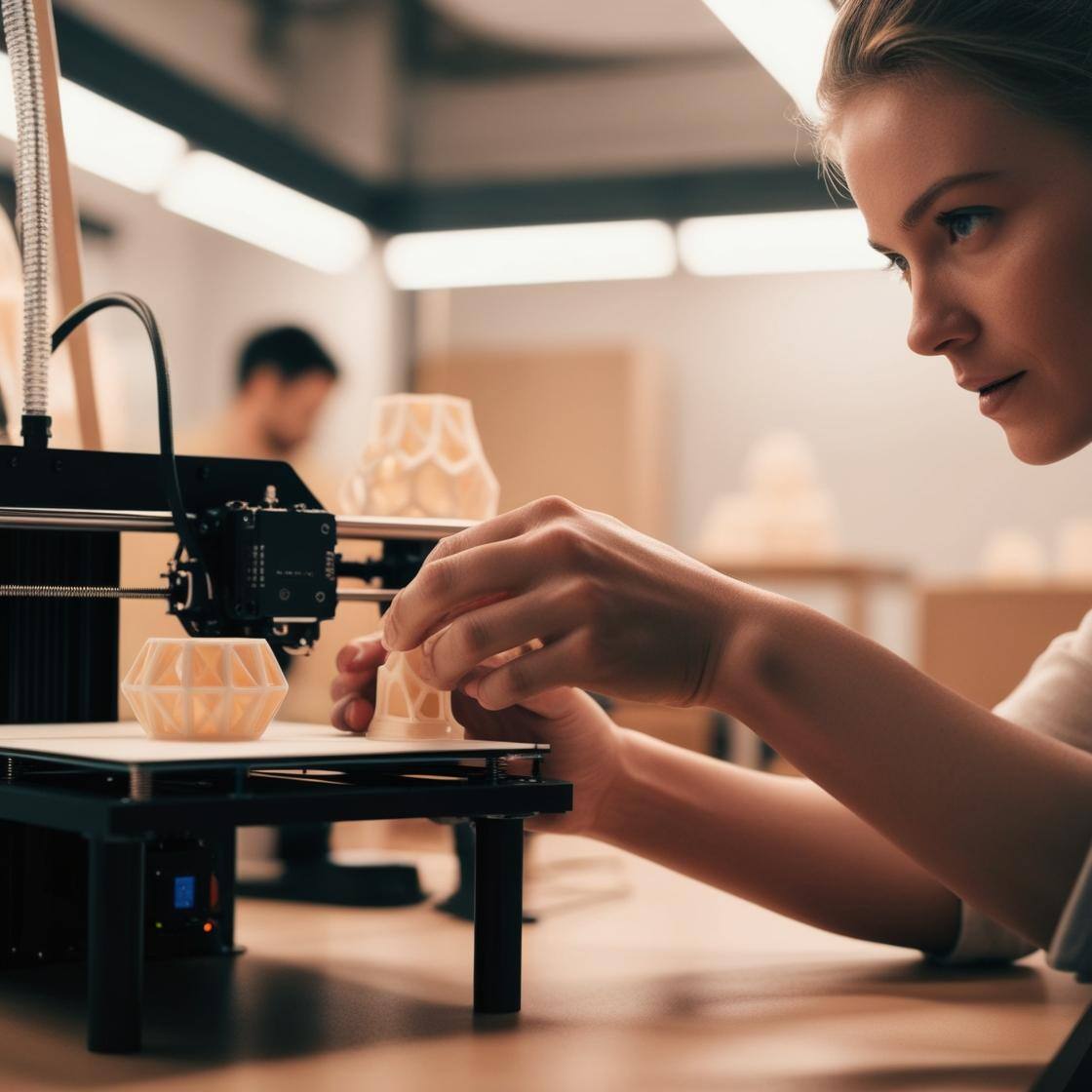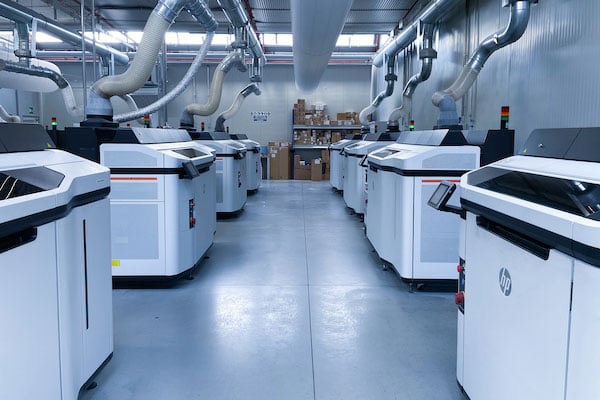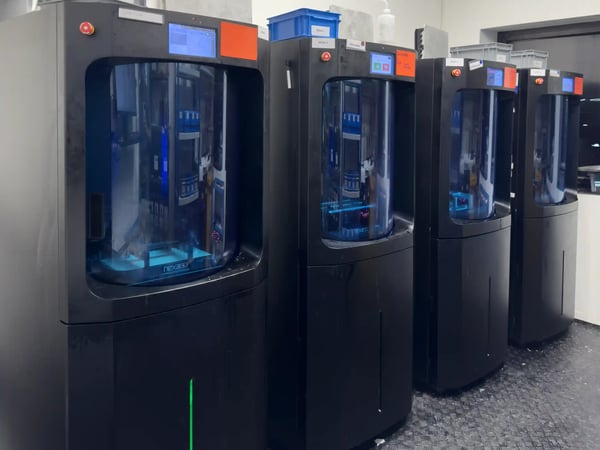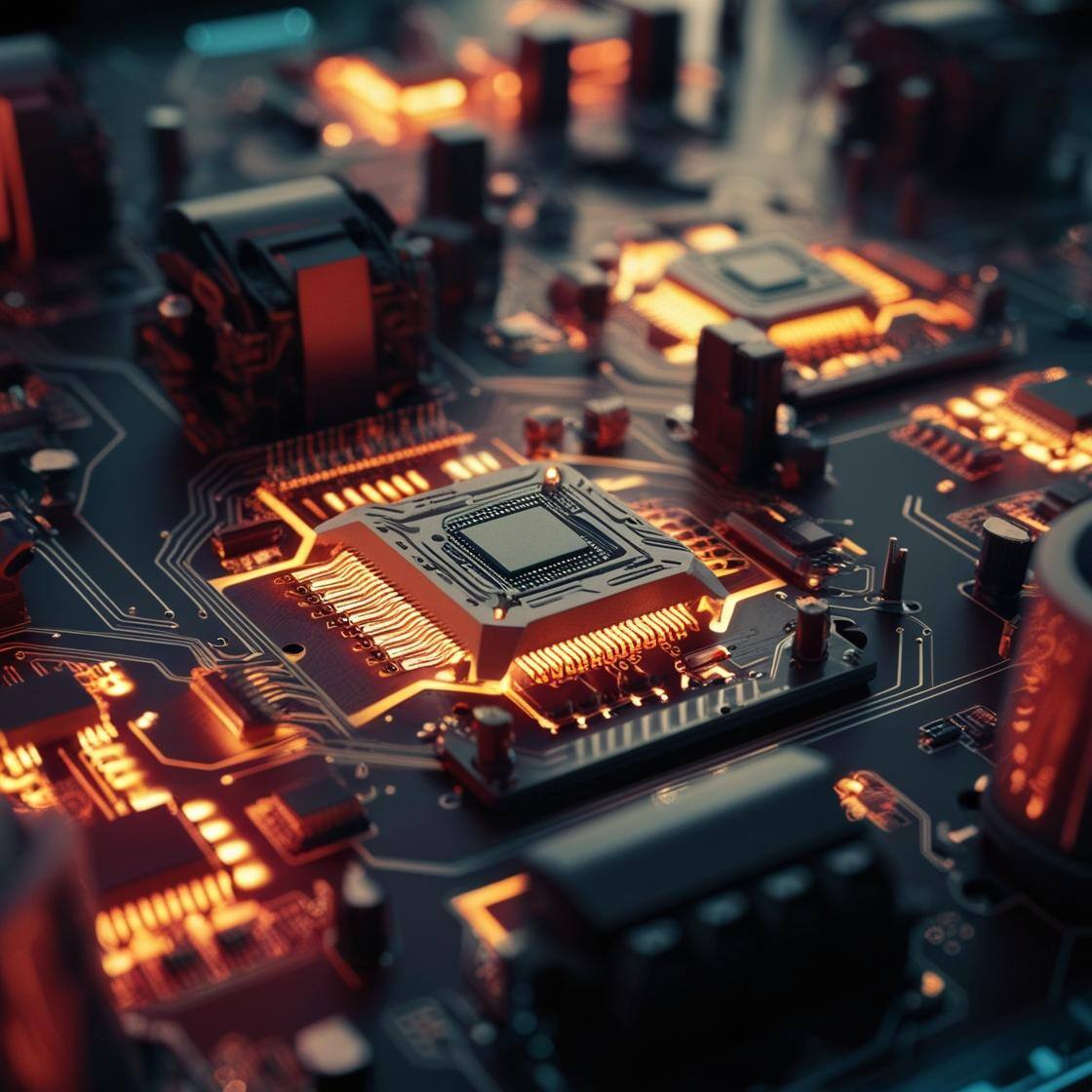6 min read
3D Printing and Nanotechnology
3D printing and nanotechnology are two fields of research and innovation that, at first glance, might appear worlds apart. The former focuses on...
6 min read
![]() Weerg staff
:
Feb 13, 2025
Weerg staff
:
Feb 13, 2025

3D printing represents a groundbreaking advancement in the production of objects, allowing ideas, prototypes, and finished products to be realised with remarkable design freedom. The appeal of this technology lies in its ability to construct complex shapes layer by layer, without the constraints typical of traditional manufacturing processes. Today, the sector offers various technologies, including FDM (Fused Deposition Modelling), MJF (Multi Jet Fusion), and MSLA (Masked Stereolithography), catering to a wide range of needs, from hobbyist use to industrial applications. For those new to 3D printing, navigating technical terms, material types, and hardware requirements can be challenging. This text provides an introduction to these technologies, an overview of their key characteristics, and guidance on selecting the most suitable solution for individual needs, with a particular focus on the importance of specialised online printing services.
3D printing has gained popularity for several reasons. Firstly, the cost of entry has significantly decreased compared to the past. A few years ago, owning a machine capable of creating three-dimensional objects was a privilege limited to a handful of companies. Today, basic FDM printers are available at affordable prices, and 3D modelling software, as well as slicing programmes required to prepare print files, are readily accessible in free or open-source versions. This accessibility has fostered the growth of a vast community of hobbyists and professionals who share experiences, tips, and projects.
Moreover, 3D printing is incredibly versatile, supporting a wide range of applications. These include the creation of functional prototypes for rapid concept testing, the customisation of design objects, the production of industrial components, and much more. The ability to manufacture small batches or unique pieces without the typical setup costs of traditional processes is particularly advantageous for start-ups and small businesses.
FDM technology, short for Fused Deposition Modelling, is the most common among 3D printers and is often considered the entry point for those wanting to experiment with 3D printing at home or in a small office. The working principle is based on the extrusion of a thermoplastic filament, such as PLA or ABS, which is melted and deposited layer by layer to form the object. The filament, wound on a spool, is pushed into a heated nozzle that melts it and releases it onto the print bed in a controlled manner.
The most popular materials for FDM include PLA, ABS, PETG, and TPU, each with distinct physical properties. PLA is known for its ease of printing and low cost, ABS offers high impact resistance, PETG combines good mechanical and chemical properties with ease of use, while TPU is ideal for producing flexible parts resistant to substances like oils and greases. In addition to domestic use, FDM also enables the creation of high-performance and specialised components, such as those made from PEEK or PPS GF, though these require specialised machines and technology not typically accessible at a consumer level.
The strength of FDM lies in its affordability, the availability of machines and filaments, and its relative ease of setup. However, the surface finish is affected by the layer-by-layer construction, often resulting in a rougher texture. Additionally, overhangs and highly complex geometries may require support structures, which must be removed post-production—sometimes with difficulty, leaving marks or damage on the contact surfaces.
Despite these limitations, FDM is an excellent starting point for beginners, providing an opportunity to learn how to manage key parameters such as extrusion temperature, print speed, cooling, and infill density.
MJF (Multi Jet Fusion), developed by HP, is a widely discussed technology, particularly in industrial and professional settings. Unlike FDM, this process is based on a bed of thermoplastic powder, typically nylon, which is selectively sintered using a fusion agent and heating lamps. Layer by layer, the machine deposits a fine powder layer and, through a jetting system, applies the fusion agent only in areas where the object is to solidify. A heating module then melts the powder in the targeted regions, while the surrounding powder remains intact and reusable for future prints.
This manufacturing method enables the simultaneous printing of multiple parts in a single build and eliminates the need for support structures, as the surrounding powder naturally supports the components during printing. The final output is a mechanically strong object with good precision and smooth surfaces. MJF users appreciate its rapid production capabilities, its suitability for small batch manufacturing, and the overall quality of the finished parts.
However, it is important to note that MJF is an industrial system with costs and machine sizes that make it impractical for home use. Desktop MJF printers do not exist because the hardware, energy consumption, and post-processing steps (such as powder removal and recycling) require significant space and expertise. Given its complexity and cost, MJF is typically used by large companies or specialised services that provide access to these machines. These services allow users to upload their 3D files online, select a material, and order the production of their parts. In this sense, MJF becomes highly advantageous for those seeking high performance and robustness in their final products without investing in expensive infrastructure.

MSLA (Masked Stereolithography) represents another step forward in terms of precision and aesthetic quality. This technology utilises a photosensitive resin contained in a dedicated vat, which is polymerised layer by layer using a UV light source. The resin solidifies in the designated areas while the remaining liquid can be reused.
MSLA printers are renowned for their ability to produce highly detailed objects with smooth surfaces, free from the prominent layer lines characteristic of FDM prints. This makes MSLA ideal for applications such as model making, jewellery, and any use case where fine detail and aesthetics are paramount. However, resin printing requires specific safety precautions, as the materials can be irritating and must be handled with gloves and protective masks. Additionally, the cleaning process is crucial for removing residual liquid resin before post-curing.
MSLA printers range from desktop models for hobbyists to professional-grade machines offering larger build volumes and superior performance. For those looking to produce small-scale, high-detail miniatures or prototypes, this technology presents a compelling option, provided that resin costs, post-processing time, and chemical handling requirements are taken into account.
The choice of 3D printing technology depends on several factors. The first is the objective of the project. If the goal is to create small everyday objects, test models, gadgets, or relatively simple prototypes, FDM is an economical and easy-to-manage option, even within a personal workspace. However, if the requirement is to produce durable mechanical components, functional prototypes, or small batches of parts with precise technical properties, MJF may be the most suitable solution. As previously mentioned, this technology is generally available through industrial printing services, as it is not feasible for installation in a home or standard office setting. If the goal involves creating miniatures, jewellery, high-precision aesthetic elements, or parts requiring perfectly smooth surfaces and intricate details, MSLA is an excellent choice—provided that resin costs, post-processing times, and chemical handling requirements are taken into account.
Another key aspect to consider is the overall budget and level of experience. Those new to 3D printing may find it practical to purchase an affordable FDM printer to familiarise themselves with additive manufacturing principles, 3D file management, and slicing software. When industrial-quality results or superior performance are required, a specialised online printing service provides access to state-of-the-art machinery and a broad range of materials. This approach is particularly beneficial as it eliminates the need for direct investment in expensive and complex equipment. Moreover, professional printing services often offer support in file preparation, recommendations on minimum thicknesses, and optimal design considerations to prevent defects or distortions.
To begin with 3D printing, the first step is to obtain a 3D model, which can either be designed using modelling software (such as Fusion 360, Blender, FreeCAD, and others) or downloaded from one of many online platforms where designers share their projects. Once the digital file is acquired, it is imported into slicing software, which translates it into instructions that the printer follows to build the object layer by layer. Depending on the technology, parameters such as layer height, print speed, the presence of supports, internal infill density, and working temperature are defined. With experience, users learn to balance these parameters to achieve the best quality while optimising print times. At this stage, experimenting with simple objects is beneficial, helping to troubleshoot common issues such as warping (component deformation), the removal of supports in challenging areas, and achieving proper adhesion to the print bed.
In terms of learning, consulting online guides and tutorials is invaluable. Many enthusiasts freely share their experiences, tips, and models, forming a global community that can be a tremendous resource, particularly when encountering initial printing challenges. Engaging in forums or discussion groups on social media facilitates knowledge exchange and helps resolve common problems.

There are instances where, despite passion and expertise, achieving an industrial-standard result or using technical materials is necessary. This may arise when presenting a prototype to a client or participating in a tender that demands high precision, aesthetics, and durability. In such cases, industrial technologies like MJF or advanced versions of FDM and MSLA provide the most suitable solution. Turning to a specialised online service ensures a high-quality final product. Companies offering these services handle the entire process, from file verification to print optimisation, surface finishing, and final delivery. Furthermore, they operate cutting-edge machinery and possess the expertise to prevent errors and delays. One of the major advantages of using a professional service is the ability to choose from a wide range of materials and finishes without incurring the costs of purchasing and maintaining expensive machinery. Having access to a knowledgeable and responsive service provider is an additional asset for those who wish to focus more on design and functionality rather than the technical aspects of printing.
In conclusion, 3D printing is an extraordinary resource for both hobbyists and professionals, offering rapid prototyping and creative freedom like few other technologies. Those entering this field may start with FDM, quickly experiencing the satisfaction of bringing a digital concept to life, or explore MSLA if intricate detail is a priority. If the aim is to produce durable parts with advanced mechanical properties, then investigating options such as MJF with the support of specialised partners is advisable. The current landscape is rich in opportunities and online resources, along with communities of enthusiasts eager to share insights and advice. When a project moves beyond amateur experimentation and requires professional finishes or specific technical properties, online printing services offer an optimal solution for achieving the best results, benefiting from established expertise and cutting-edge machinery without the need for costly investments.
The true beauty of 3D printing lies in its versatility—anyone can learn to leverage it, from beginners uploading their first model to print a simple desk accessory, to large companies manufacturing functional components for industries such as automotive or aerospace. With a bit of practice and curiosity, 3D printing becomes an endless playground of creativity, where the boundary between idea and reality grows ever closer.

6 min read
3D printing and nanotechnology are two fields of research and innovation that, at first glance, might appear worlds apart. The former focuses on...

6 min read
Padel has seen exponential growth in Italy and worldwide in recent years. A glance at sports clubs in major cities and smaller towns alike reveals an...

6 min read
The game of chess boasts a history spanning millennia, seamlessly merging art, strategy, and culture into a singular experience that has captivated...